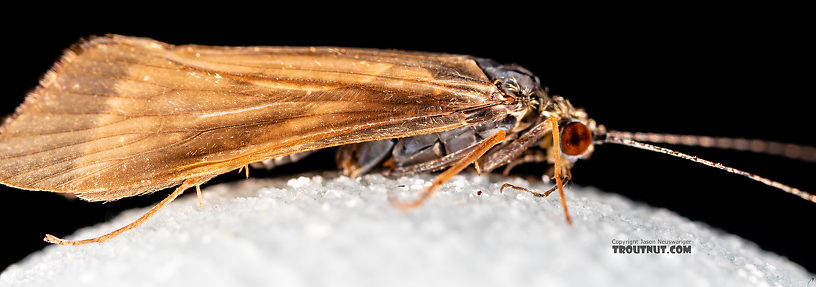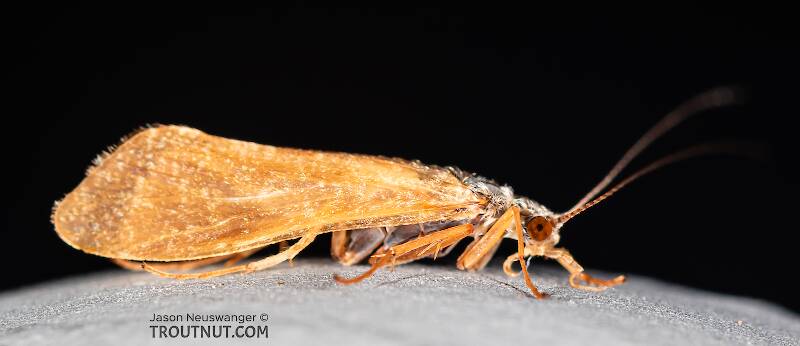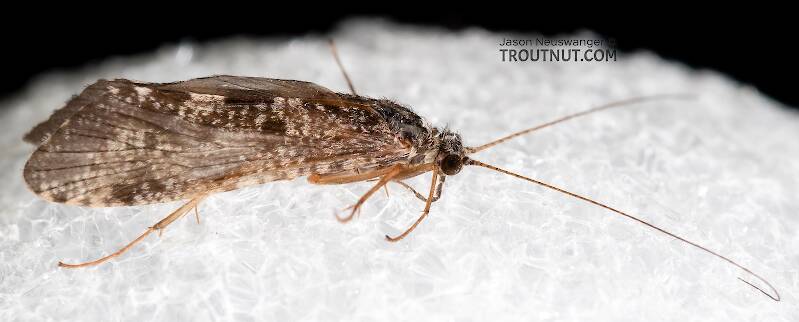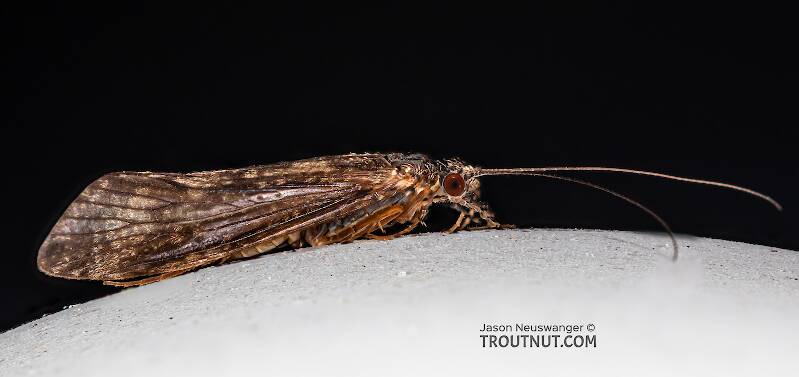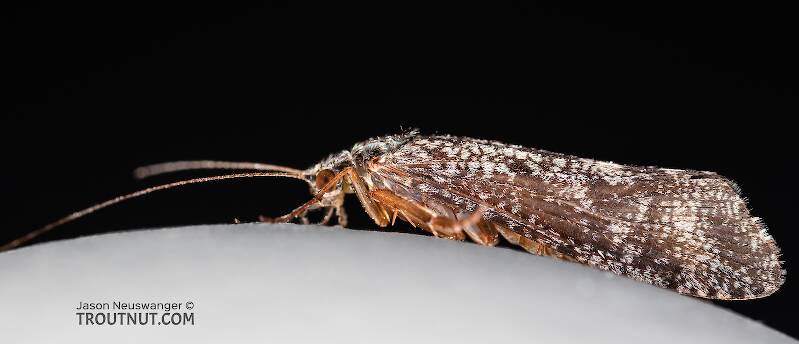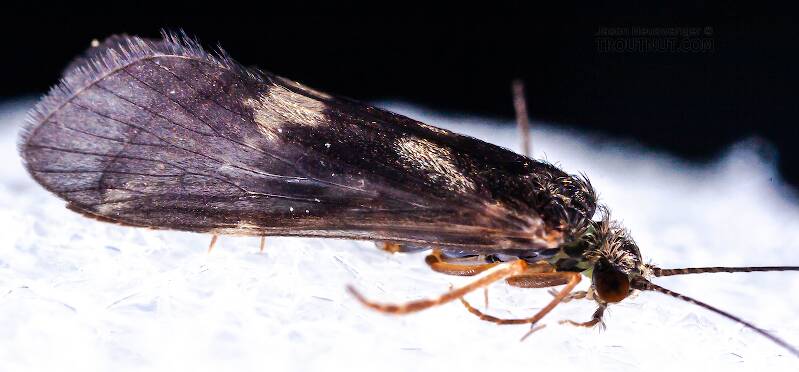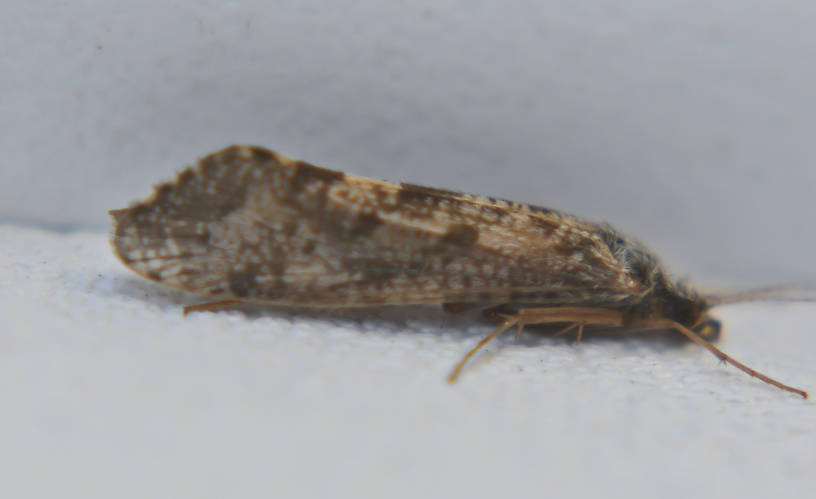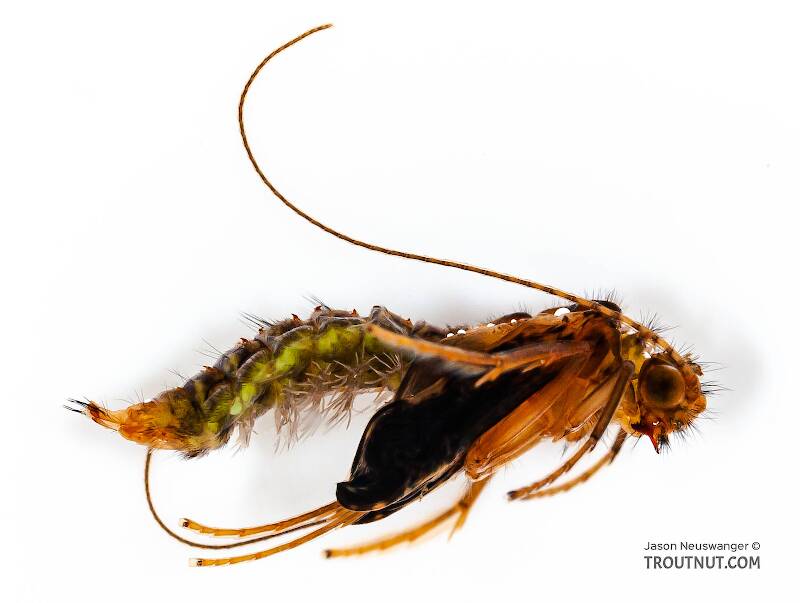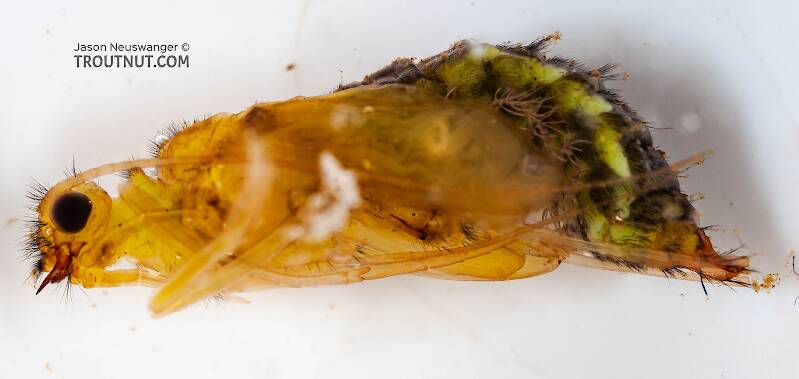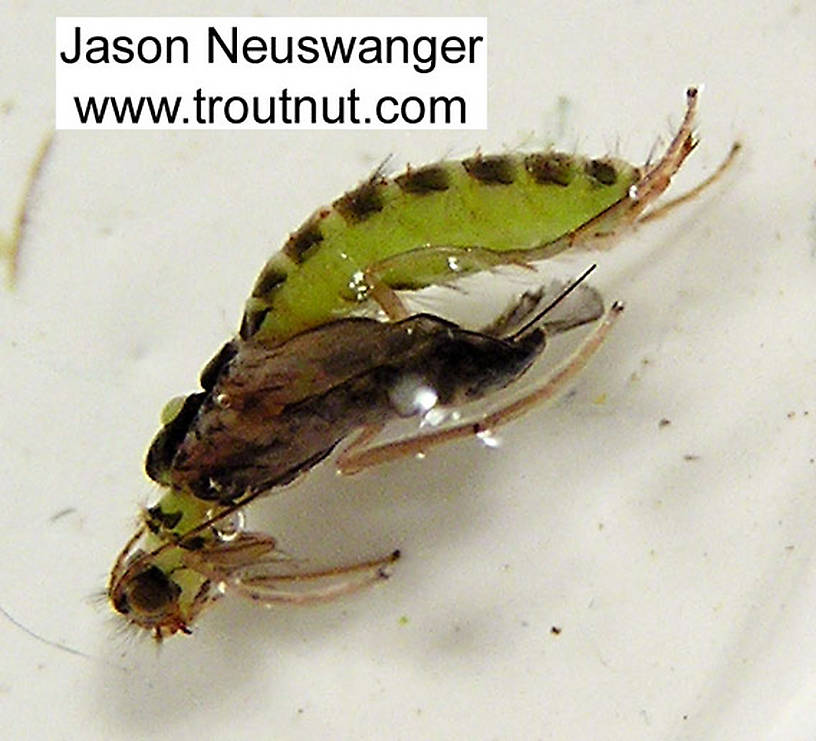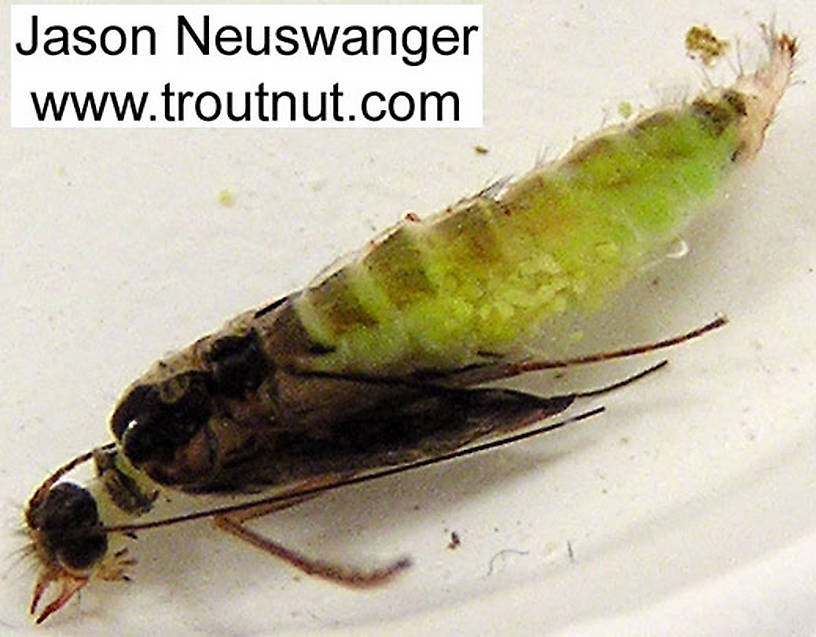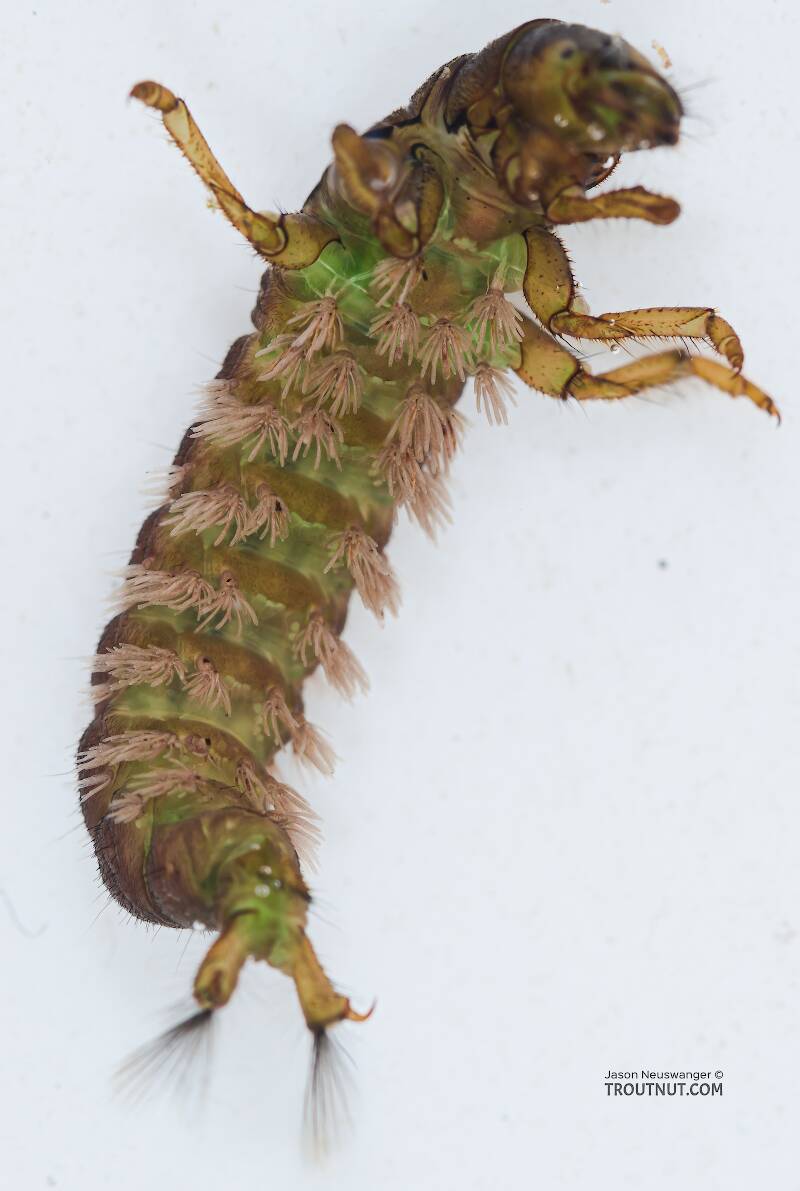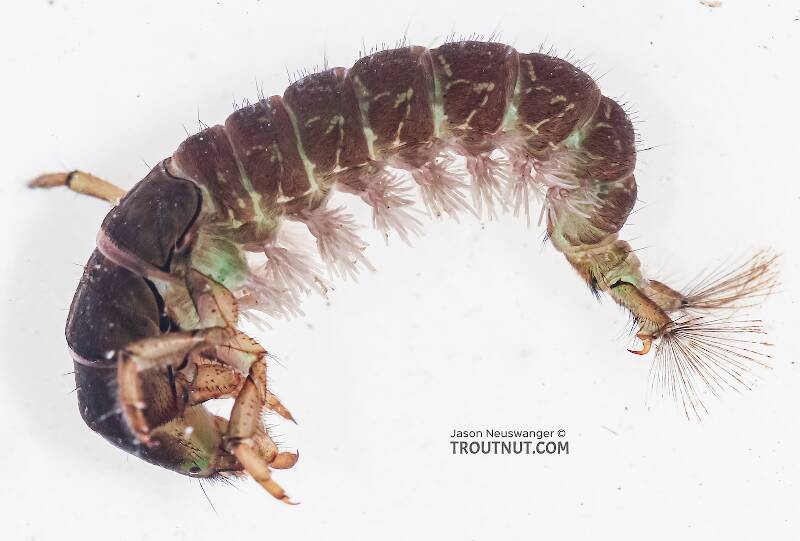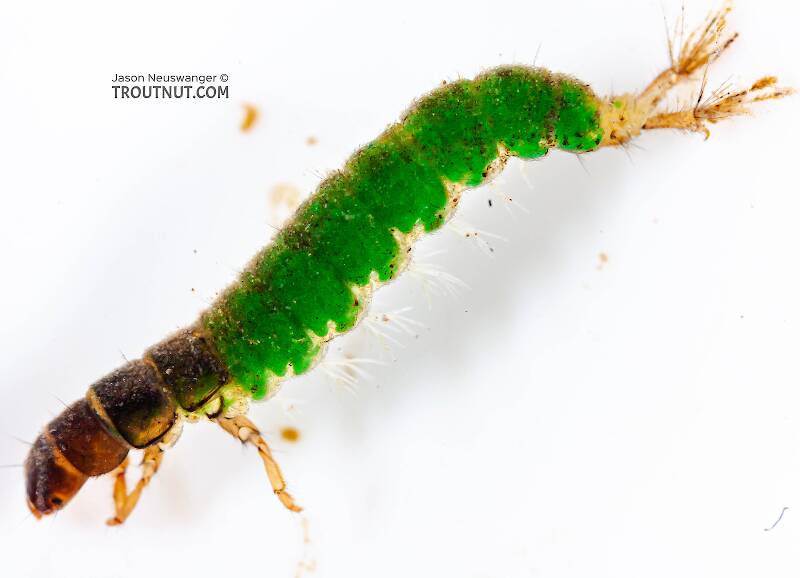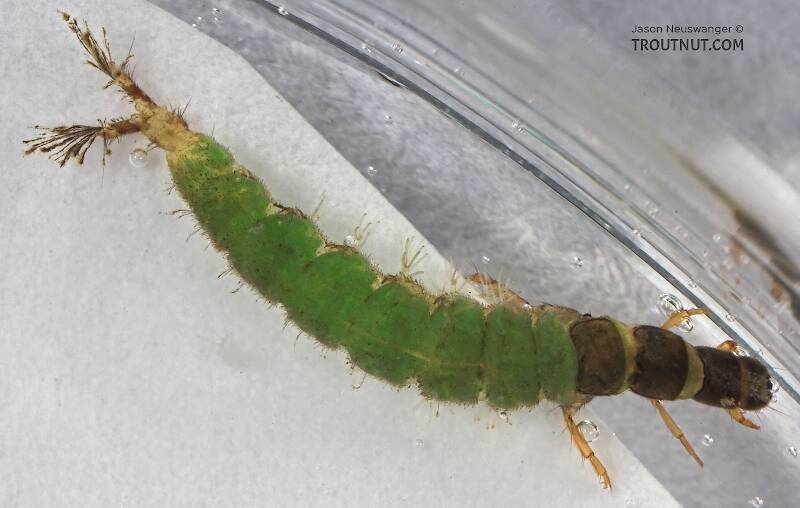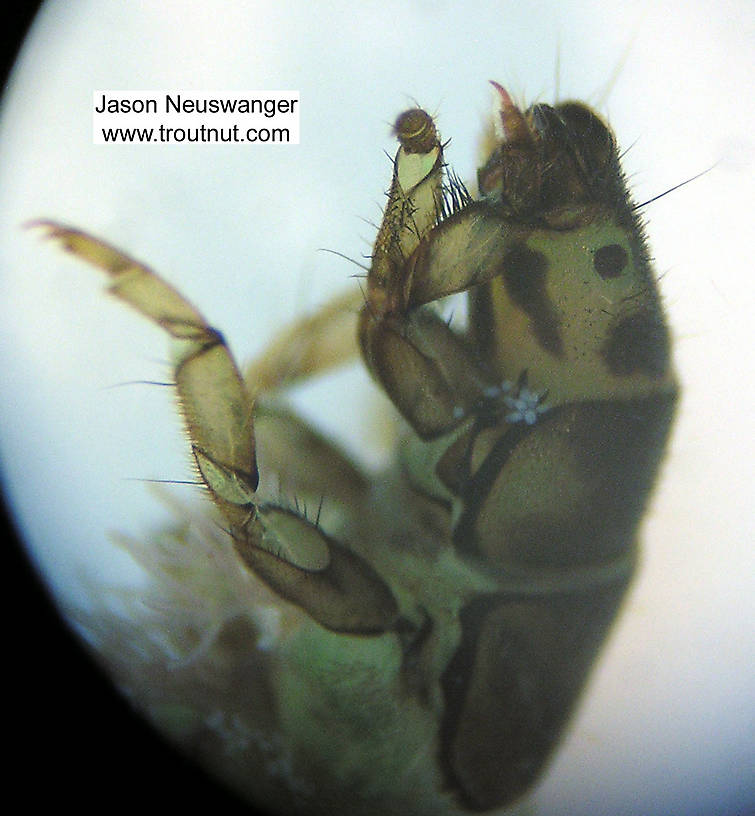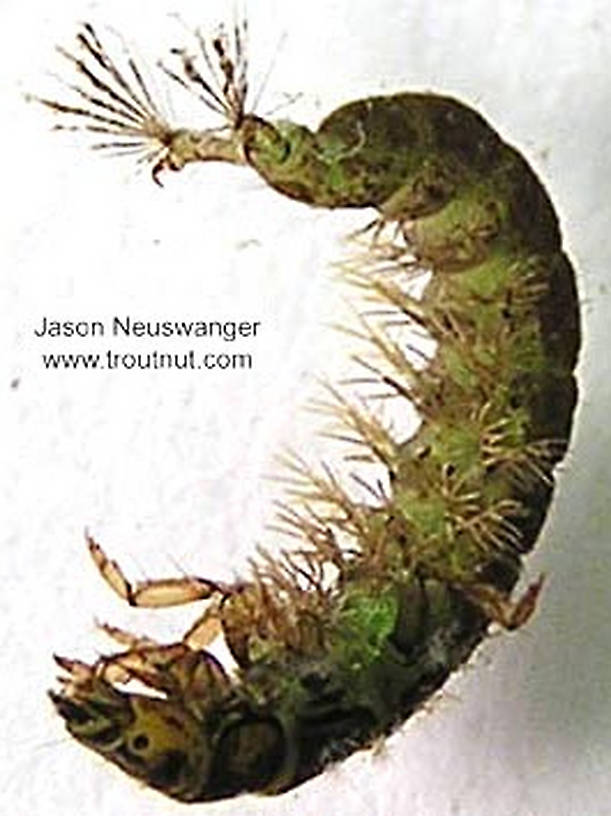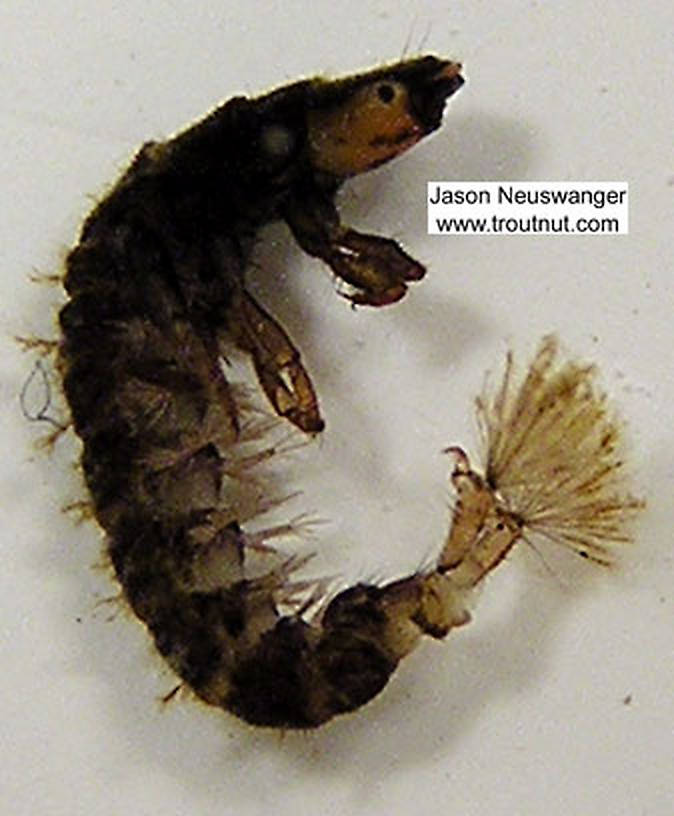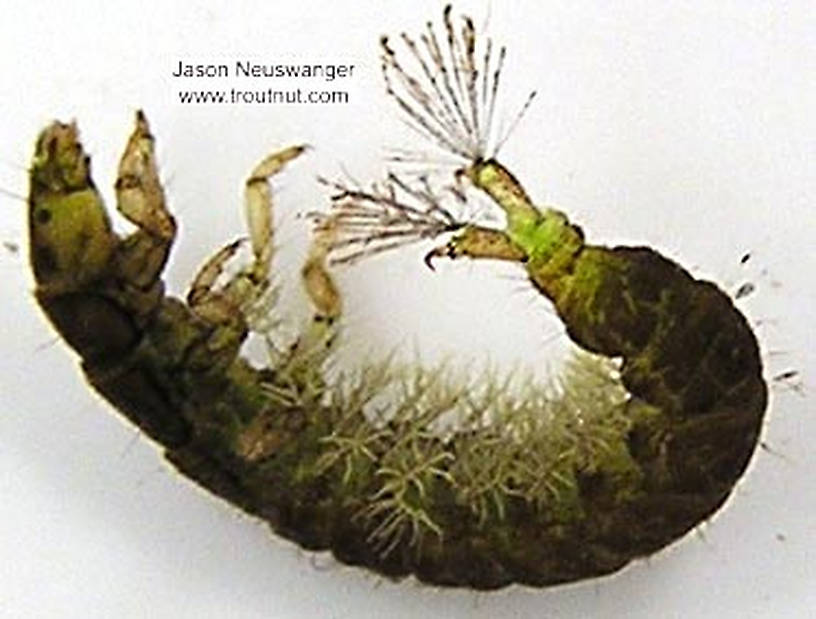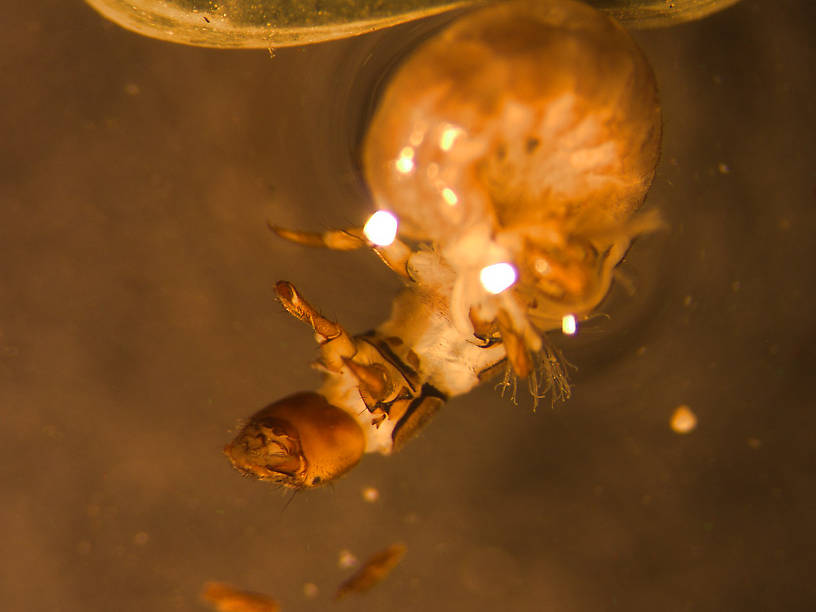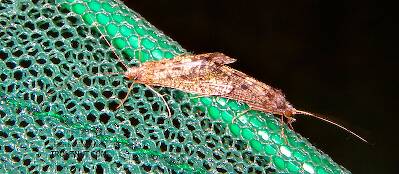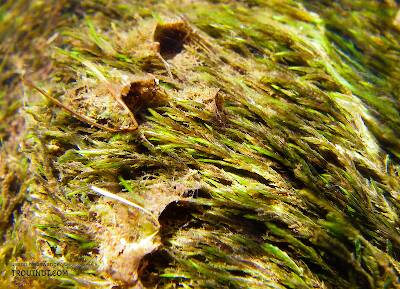
Hex Mayflies
Hexagenia limbata
The famous nocturnal Hex hatch of the Midwest (and a few other lucky locations) stirs to the surface mythically large brown trout that only touch streamers for the rest of the year.
Featured on the forum

As far as I can tell, this species has only previously been reported from one site in Oregon along the Columbia gorge. However, the key characteristics are fairly unmistakable in all except for one minor detail:
— 4 small yellow spots on frons visible in photos
— Narrow occipital spinule row curves forward (but doesn’t quite meet on stem of ecdysial suture, as it's supposed to in this species)
— Short spinules on anterior margin of front legs
— Short rposterior row of blunt spinules on abdominal tergae, rather than elongated spinules dorsally
I caught several of these mature nymphs in the fishless, tiny headwaters of a creek high in the Wenatchee Mountains.
— 4 small yellow spots on frons visible in photos
— Narrow occipital spinule row curves forward (but doesn’t quite meet on stem of ecdysial suture, as it's supposed to in this species)
— Short spinules on anterior margin of front legs
— Short rposterior row of blunt spinules on abdominal tergae, rather than elongated spinules dorsally
I caught several of these mature nymphs in the fishless, tiny headwaters of a creek high in the Wenatchee Mountains.

Troutnut is a project started in 2003 by salmonid ecologist Jason "Troutnut" Neuswanger to help anglers and
fly tyers unabashedly embrace the entomological side of the sport. Learn more about Troutnut or
support the project for an enhanced experience here.
Caddisfly Family Hydropsychidae
This is the most important caddisfly family for anglers. They are extremely abundant in trout streams and their life cycle specifics make them very vulnerable to trout.
Hydropsyche is the best-known and most important genus in the family but Cheumatopsyche has some significant hatches as well.
Two species of note from the other genera are Potamyia flava, a relatively unimportant Southern species, and Macrostemum zebratum, the important species commonly known as the "Zebra Caddis."
Hydropsyche is the best-known and most important genus in the family but Cheumatopsyche has some significant hatches as well.
Two species of note from the other genera are Potamyia flava, a relatively unimportant Southern species, and Macrostemum zebratum, the important species commonly known as the "Zebra Caddis."
Where & when
In 4649 records from GBIF, adults of this family have mostly been collected during June (27%), July (22%), May (16%), August (16%), September (7%), and April (6%).
In 2274 records from GBIF, this family has been collected at elevations ranging from -30 to 19701 ft, with an average (median) of 2251 ft.
Family Range
Hatching behavior
Before emerging, Hydropsychidae pupae drift along the bottom or just under the surface for an unusually long time, from a few minutes to a few hours. They then take an unusualy long time struggling out through the film. Both of these tendencies make them more ideal for the angler.Egg-Laying behavior
Gary LaFontaine writes in Caddisflies that Hydropsychidae females dive to lay their eggs on the river bottom. When they're done, instead of swimming back to the surface quickly, they dead-drift and float up. This makes them exceptionally vulnerable to trout.Swisher and Richards in Selective Trout say that some species oviposit by flying low over the surface and dipping their abdomens slightly into the water repeatedly lay eggs. I'm inclined to believe Swisher and Richards about the variation, and to assume that the behavior LaFontaine described is by far the more common of the two.
Larva & pupa biology
Diet: Microorganisms filtered by their nets
Current speed: Medium to fast
Shelter type: Nets instead of cases; may build shelters near nets
Many larvae of Hydropsyche (and perhaps the others, though I have not confirmed it) secrete a white line of silk, anchored to a rock on one end. They use it to rappel between rocks in the current, just as spiders or inchworms may use their silk to move around a tree. LaFontaine popularized the trick of whitening the last foot and a half of one's leader to imitate this anchor line, noting that it improved his success and made the larvae "almost as worthwhile as the pupae and adults."
On page 231 of Caddisflies, Lafontaine presents a very interesting chart relating the abundance and net mesh size of each Hydropsychidae genus to different habitat factors like river size and water temperature. Rather than try to summarize it here I will recommend that you buy the book.
Hydropsychidae Fly Fishing Tips
Because they are so common, imitations of this family perform very well as searching patterns. Most of the fashionable "Czech Nymphs" imitate Hydropsychidae larvae, as do Cinnamon Caddis dry flies, which perform very well according to a 1998 study in the British Medical Journal, paraphrased again in that journal and quoted here:Many doctors fish for trout, but there have been endless arguments over the best choice of fly. To extend evidence based practice from their professional into their leisure hours (where it might conceivably be more useful) Britton et al ( p 1678) carried out a randomised trial of five different dry flies (artificial floating flies) on the River Kennet in Berkshire. Before the trial the investigators had most confidence in the Grey Wulff and least in the Cinnamon Sedge. In the trial the Cinnamon Sedge caught the most trout and also seemed to be significantly favoured by brown as opposed to rainbow trout. These findings are of biological as well as practical importance, but the trial was small and the authors press the urgent need for much more research.
Clearly more research is necessary to settle the issue convincingly. As the authors of the study point out,
None of the investigators has any intention of taking the slightest notice of the results of this study.
I vow to fish as much as possible until the question of which dry fly is best has been firmly resolved to the agreement of all.
Specimens of the Caddisfly Family Hydropsychidae
5 Male Adults
4 Female Adults
6 Adults
4 Pupae
12 Larvae
1 Streamside Picture of Hydropsychidae Caddisflies:
1 Underwater Picture of Hydropsychidae Caddisflies:
Discussions of Hydropsychidae
Arctopsyche grandis in waterton canyon
1 replies
Posted by Krikut on May 16, 2016 in the species Arctopsyche grandis
Last reply on May 17, 2016 by Bnorikane
Discovered one of these guys or (gals?) back on March 20 of this year up in Waterton Canyon. He was so chunky I first thought it was a small hellgrammite (I grew up in Virginia, where the hellgrammite was the bug of choice in most smallmouth rivers). This particular one measured about half an inch and had a bright green tail/foot segment. I'm curious if you guys have a favorite immitation? Thanks!
Arctopsyche Grandis
6 replies
Posted by Epeorus on Jul 2, 2014 in the genus Arctopsyche
Last reply on Jul 6, 2014 by Entoman
A while ago there was some discussion of this bug in Colorado. I first came across this beast in early July 2011 on the Eagle River, just downstream of Edwards, Co. Met him again this week on the Eagle. It's quite the blast - big bugs and big trout. Especially the ones rising with abandon in the fast water in the middle of the day.
Funny thing is we don't seem to see these guys most years. The commonality between 2011 and this year is an extended runoff leading to cold and high - though clear water in early July. I wonder if they normally hatch during the peak of the runoff when no one is on the water.
I remember people commenting about these caddis allegedly being in parts of Colorado. The hatches the last two days on the Eagle and what I saw in 2011 would add some level of credence to that belief.
A size 10 (on a Partridge L3A) sponge body caddis with a dark gray body, and a size 10 Lafontaine sparkle emerger with a gray body and a clear shroud were the ticket.
Funny thing is we don't seem to see these guys most years. The commonality between 2011 and this year is an extended runoff leading to cold and high - though clear water in early July. I wonder if they normally hatch during the peak of the runoff when no one is on the water.
I remember people commenting about these caddis allegedly being in parts of Colorado. The hatches the last two days on the Eagle and what I saw in 2011 would add some level of credence to that belief.
A size 10 (on a Partridge L3A) sponge body caddis with a dark gray body, and a size 10 Lafontaine sparkle emerger with a gray body and a clear shroud were the ticket.
Arctopsyche grandis
6 replies
Posted by Flymonster on Sep 7, 2011 in the species Arctopsyche grandis
Last reply on May 20, 2013 by Flymonster
Here in the Willamette Valley the McKenzie Caddis (as Arctopsyche grandis is known locally) usually begins its emergence sometime around mid-May and can continue into mid-June. The most emergence activity will be noted on warm days once the water temperature reaches @ 52f. Most hatches occur on warm sunny days from 4pm-7pm. Arlen Thomason goes into great detail about the life-cycle and behaviors of a. grandis in his book "Bug Water".
At least for me, the McKenzie Caddis, marks the beginning of summer and excellent fly fishing for trout on the McKenzie, Middle Fork Willamette, North Fork of the Middle Fork Willamette, and our other local rivers and streams.
At least for me, the McKenzie Caddis, marks the beginning of summer and excellent fly fishing for trout on the McKenzie, Middle Fork Willamette, North Fork of the Middle Fork Willamette, and our other local rivers and streams.
What flies to imitate
12 replies
Posted by Goose on Sep 19, 2006 in the genus Ceratopsyche
Last reply on Mar 21, 2010 by Martinlf
Jason: What species', in common angler language, are represented in this genus? I'm trying to determine which ones I should spend my time on imitating them. Are they October Caddis, Grannom Caddis, etc. Are those afore mentioned sedges? I would like to know the names so I can tie them the correct size and colors. Just trying to learn. Thanks
Zebra Caddis
1 replies
Posted by Lastchance on Aug 4, 2008 in the species Macrostemum zebratum
Last reply on Aug 4, 2008 by Taxon
Is there a photo of one? I've never heard of them or perhaps I know them by a different name.
Start a Discussion of Hydropsychidae
References
- LaFontaine, Gary. 1981. Caddisflies. The Lyons Press.
- Swisher, Doug and Carl Richards. 2000. Selective Trout. The Lyons Press.
Caddisfly Family Hydropsychidae
Taxonomy
Genus in Hydropsychidae
ArctopsycheGreat Gray Spotted Sedges
2
21
CeratopsycheSpotted Sedges
0
0
CheumatopsycheLittle Sister Sedges
7
49
HydropsycheSpotted Sedges
13
97
MacrostemumGlossy Wing Sedges
0
0
Parapsyche
0
0
Potamyia
0
0
Genus in Hydropsychidae: Arctopsyche, Ceratopsyche, Cheumatopsyche, Hydropsyche, Macrostemum, Parapsyche, Potamyia
5 genera (Diplectrona, Homoplectra, Leptonema, Oropsyche, and Smicridea) aren't included.




